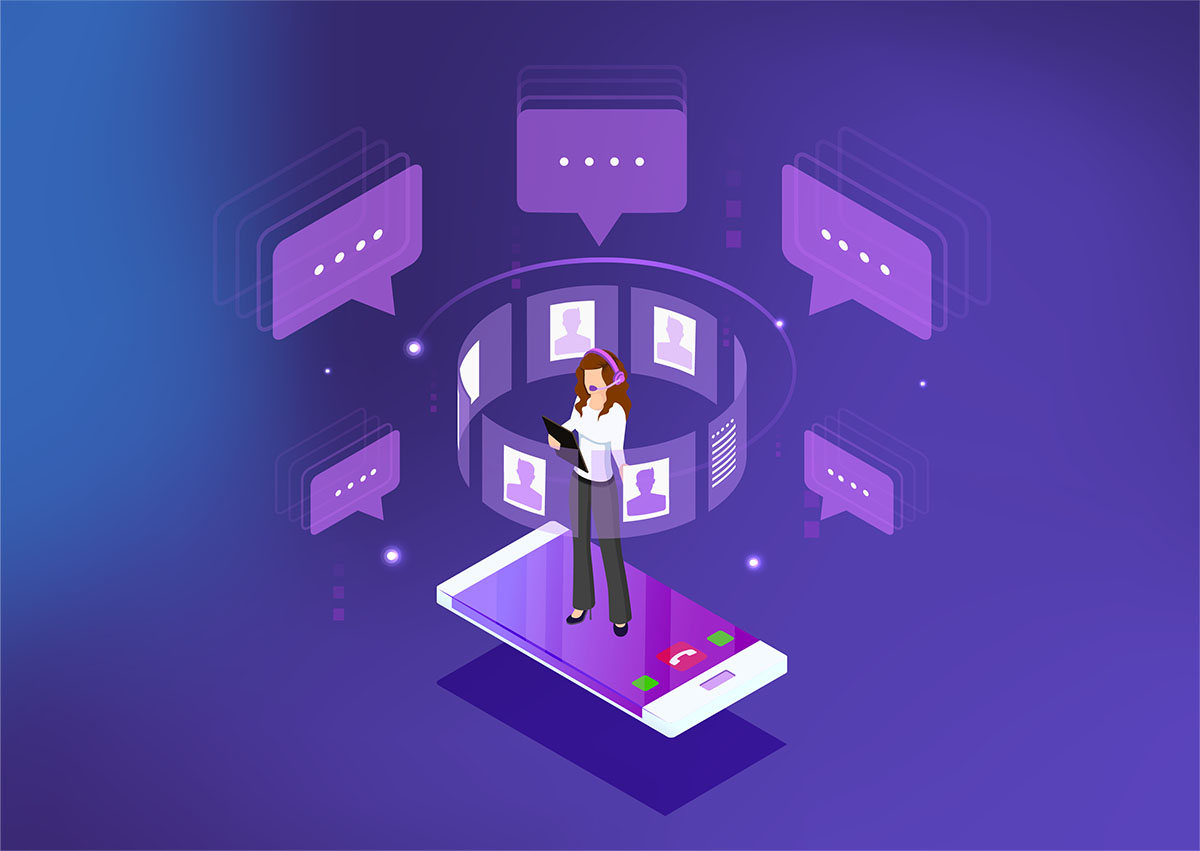

“All our operators are busy; please hold for the next available agent.” These words are sometimes just the beginning of a long and frustrating experience. Sometimes it leads to other painful comments such as “Please hold while I check with my supervisor,” or “I’ll transfer you to that department.” And too often, after transferring you may be asked for information that you already provided.
We have all experienced disjointed customer experiences, whether they have been on the phone, in person, or online. They involve extra steps, handoffs, and transitions that take too long, require too much effort, and result in frustration.
Because of the negative impact such experiences can have on an organization’s brand and reputation, it’s clear that creating seamless experiences for customers is more important than ever, which is why we consider this topic to be one of the themes driving the evolution of CX.
What do we mean by seamless experiences?
Seamless experiences occur when an organization makes everything as easy, efficient, and relevant as possible for their customers. This includes minimizing the steps necessary to do business so the customer journey is a unified experience aligned with the expectations of the customer.
Every organization has valid business reasons why handoffs and transitions occur. However, customers want to accomplish tasks and get answers to their questions as quickly and easily as possible. They aren’t concerned with the internal operations that make that happen. To meet today’s rising expectations, organizations must put themselves in the shoes of the customer to make their experiences as seamless as possible regardless of how they interact with the organization. Customers seek a consistent experience whether they buy online and return in the store, browse online and purchase through a contact, or research online, but call to resolve an issue.
Accomplishing this requires a clear vision of the ideal customer journey, engaged employees who are committed to delivering it, and the tools and processes to listen, monitor, measure, and understand every detail of the entire customer experience.
Understanding the customer journey
The first step in designing seamless experiences is to truly understand the current journey customers take in working with your organization. This involves mapping out the customer’s journey, documenting all relevant touchpoints, and highlighting the key “moments of truth,” or significant interactions that matter most.
Journey mapping programs involve cross-functional groups from within the organization to accurately document each interaction with the customer. By having representation from various departments, those involved learn and share with one another to gain a solid understanding of what customers need and what they expect. Typically, these projects will result in a flurry of “ah-ha!” moments, identifying things that need to be fixed immediately as well as igniting ideas for completely reimagining a more intentional and unified experience for customers.
Listen to the expert!
Walker expert Diane Skirvin discusses the importance of creating seamless experiences on The CX Leader Podcast. Click play to listen:
Journey mapping projects serve as the foundational first step by giving a big-picture view of the overall experience, which is essential in determining ways to make each experience more seamless.
Envisioning the ideal journey
If journey mapping can be considered the “what,” then the next step must be the “how.” While journey mapping is a valuable first step, it’s essential that an effective process follows to activate everything that was learned.
Service blueprinting is a common method used to take all those insights and consider how to intentionally design a better experience for customers. It seeks to take everything into consideration – the right people, systems, technology, policies, and training – all to work together in a way that follows the customer through the end-to-end journey and ensures the best possible experience.
It’s important to mention that service blueprinting and similar methods are deliberately aspirational. While experiences may never be perfect for every customer every time in every situation, it is important to set aside how things have been done in the past to consider an ideal future state. It is an “outside-in” approach to deliver an experience that is defined by your customers rather than the functional groups within your company.
The result of a service blueprinting program is a collection of redesigned processes that are intentionally developed with the perspective of the customer in mind.
Developing a culture focused on ease
Any new process or workflow requires buy-in, training, and resources within the organization. In other words, the most intentional process won’t work if employees are not engaged and provided with the tools they need. Fortunately, more and more organizations are recognizing that a frictionless experience is critical to their success, and they have built a culture focused on making everything as easy as possible for customers.
To stress this importance, leading companies have adopted principles, platforms, mission statements, and initiatives around the topic of ease. These send an important message to every employee, encouraging them to consider each process and each interaction by asking, “How can I make this easier?” In doing so, each employee translates this principle into their own situation to improve every customer journey.
Employees are also being given more tools and authority to make decisions at the front line. This form of enablement allows employees to expedite returns, correct mistakes, and reduce frustration in the moment without seeking approvals or checking with a colleague. No two customer journeys are alike, so employees need to be guided by the organization’s vision, but also enabled with the training, resources, and authority to deliver seamless experiences on the spot.
Capturing signals to make seamless experiences a reality
Arguably the most important elements of seamless experiences is the ability to capture signals across channels and unify this information for each customer. In essence you’re creating a memory based on their behaviors and their input. Fortunately, one of the biggest developments in CX is the evolution of the tools available to listen, monitor, and measure every customer’s interaction.
Single platforms have emerged with an array of new features. They include the ability to construct rich profiles for every customer, capture various forms of customer feedback, document every customer interaction, and even guide employees on the next best action. Such systems deliver one-on-one experiences to customers and identify friction in the journey. What’s more, users can also create dynamic customer segments based a wide array of feedback and experiences.
Our partners in the CX Now series are one of the leaders behind these innovative solutions. Qualtrics has developed a scalable system to monitor individual customer journeys and understand the thoughts, actions, and feelings of each customer so a highly personalized experience is possible.
Today’s latest tools provide CX leaders with capabilities like never before to understand what customers are saying, doing, and feeling throughout their customer journey. Not only do they enable organizations to be more responsive, but they also provide the information needed to constantly refine customers’ experiences to be more seamless.
Where should CX leaders get started?
You may have sensed the irony in this article – creating a seamless, easy experience isn’t easy at all! Regardless of all the complexity involved in mapping, envisioning, and monitoring the customer journey, there are some logical steps to get started.
- Review your customer profiles. Delivering seamless experiences starts with developing rich profiles that give you a complete understanding of your customers and entire segments of your customer base.
- Determine what seamless means to your customers. Conduct a journey mapping exercise, and then think from the outside in to envision the experience from the customers’ perspective.
- Identify stages of the customer journey that are too complex. Look for ways to begin reducing steps and handoffs to make it more seamless.
- Develop a set of statements or principles focused on customer ease. Use these as a North Star vision within your organization.
- Evaluate how your organization monitors the actions and feedback of your customers. Consider a review of emerging CX technology to provide better line of sight to customer activity.
